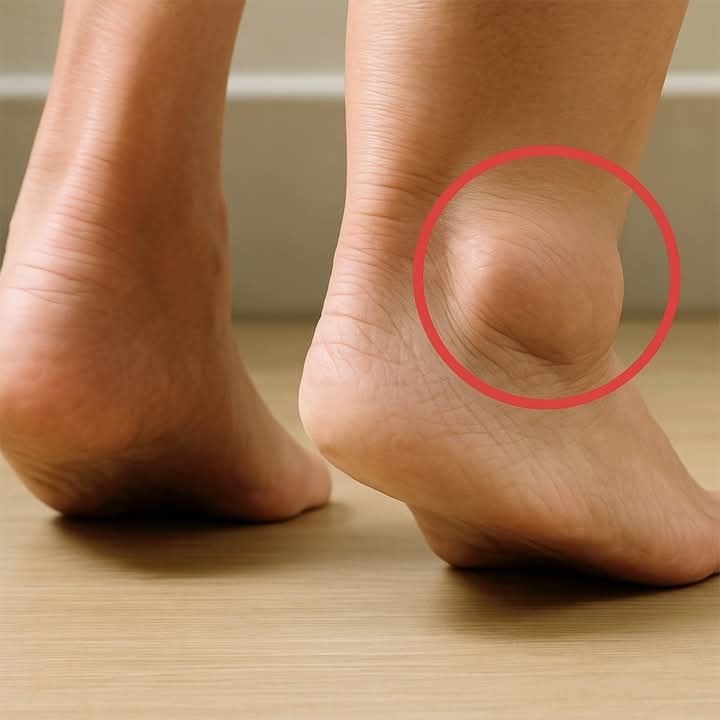
Swollen Legs and Feet: Causes, Symptoms & Natural Relief Methods
You come home after a long day, slip off your shoes—and notice your feet look puffier than usual. They might feel sore, tight, or heavy. Don’t panic! Swollen legs and feet are a common occurrence and, in many cases, can be treated with simple home remedies. Here’s what you need to know.
Why Do Legs and Feet Swell?
Swelling, also known as edema, happens when fluid accumulates in the tissues. This can occur for a variety of reasons, including:
Heat exposure, which causes blood vessels to expand
Poor circulation or standing/sitting for long hours
Excess salt in the diet
Pregnancy or side effects of medications
Dehydration or lack of movement
In most cases, swelling is harmless and temporary. However, when it persists or is accompanied by pain, redness, or fever, it could signal a more serious issue—such as heart, kidney, or venous problems—and medical advice should be sought.
Natural Ways to Reduce Swelling in the Legs and Feet
1. Cold Compress for Quick Relief
Wrap some ice or a cold pack in a towel and apply it to your swollen area for 15–20 minutes. It helps constrict blood vessels, reduce inflammation, and relieve discomfort—especially after heat exposure or standing for hours.
2. Elevate Your Legs
Prop your legs up against a wall or use pillows to keep them elevated above heart level. This encourages blood flow back to the heart and reduces fluid buildup in the lower limbs.
3. Warm Foot Bath (With Epsom Salt)
Soaking your feet in warm water helps relax muscles and boost circulation. Adding Epsom salt enhances its detoxifying and anti-swelling effect. A few drops of lavender essential oil can also provide a calming touch.
4. Contrast Soak: Hot and Cold Water
Switching between hot and cold water helps stimulate blood vessels and improve circulation:
Soak feet in warm water for 3–5 minutes
Then dip in cold water for 30–60 seconds
Repeat the cycle for 15–20 minutes
This method promotes better microcirculation and reduces fluid retention.
5. Boost Your Nutrition
Lack of certain nutrients may worsen swelling:
Magnesium, vitamin E, and omega-3s help regulate circulation and water balance
Consult your doctor before taking supplements to ensure proper dosage
6. Massage with Essential Oils
Using circular motions, massage your legs and feet with a carrier oil (like sweet almond or coconut oil) mixed with a few drops of peppermint or cypress essential oil. This boosts lymphatic drainage and relieves tension.
7. Improve Your Diet
Avoid foods high in salt, processed ingredients, alcohol, and caffeine, which all contribute to water retention. Instead, choose:
Water-rich foods: cucumber, watermelon
Potassium-rich foods: bananas, spinach
High-fiber foods: whole grains, berries
These choices support healthy circulation and reduce bloating.
8. Drink Herbal Infusions
Natural diuretics like cherry stems, parsley, and dandelion help flush out excess fluids. Regular consumption of these infusions can ease swelling and aid digestion.
9. Wear the Right Shoes
Tight or stiff shoes can restrict circulation. Opt for:
Breathable, flexible, and supportive shoes
Avoid high heels
Consider going up a half size if your feet swell frequently
When to Seek Medical Help
Persistent swelling that doesn’t go away with rest or home remedies—or is accompanied by:
Pain
Redness
Warmth
Fever
…may point to a more serious issue like deep vein thrombosis, kidney problems, or lymphatic disorders. In these cases, consult your healthcare provider as soon as possible.
In Conclusion
Swollen legs and feet may be uncomfortable, but in most cases, they’re manageable with the right care. A few simple adjustments to your daily habits—like elevating your feet, staying hydrated, or enjoying a relaxing soak—can make a big difference.
Try one of these remedies tonight—your legs will thank you!